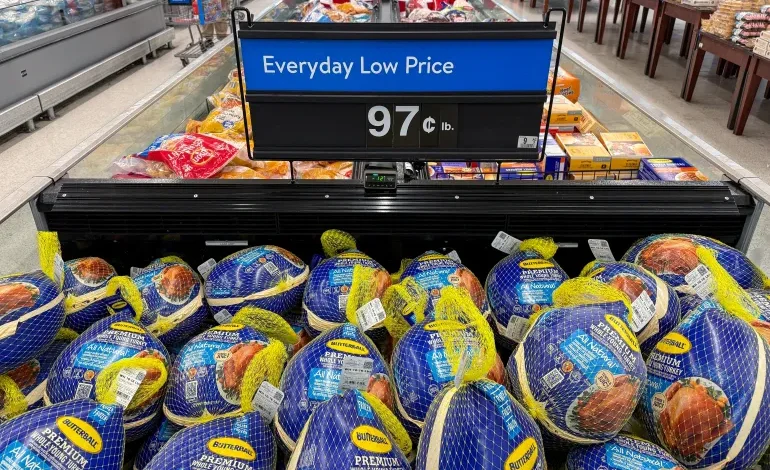Prices increase as Americans prepare for Thanksgiving

It’s a Thanksgiving tradition for many families in the United States: heading to retailers like Walmart to stock up on cranberries, sweet potatoes and – la piece de resistance – a cult classic, the Butterball turkey.
But this year, Walmart’s annual Thanksgiving meal kit has become a flashpoint over questions of inflation and economic stability under US President Donald Trump.
The Trump administration has pointed to the cost of the Walmart kit as a sign that its economic policies are taming inflation. But experts say the story is more complicated than what packages of stuffing and tinned pumpkin can tell.
The retailer is advertising a lower price this year at $4 per person for 10 people compared with $7 per person for 8 people in 2024, a talking point the White House has embraced.
On Friday, Trump once again pointed that out: “We’ve got [prices] way down from last year,” Trump said while speaking to reporters in the Oval Office. “Walmart said that Thanksgiving this year is exactly 25 percent less than last year.”
But the Bentonville, Arkansas–based retailer’s offer comes with caveats. The kit contains fewer items – 20 compared with 29 last year – and uses more generic products rather than name brands, a switch that typically lowers costs.
Companies like Walmart, Amazon and Kroger that offer Thanksgiving meal kits can shape what goes into their bundles and choose to absorb costs.
But official data actually suggests that prices are going up. The US Department of Agriculture (USDA) forecasts suggest turkey prices will be about 40 percent higher than this time last year, largely because of supply shortages tied to avian flu.
Data, however, on the price of turkey has varied depending on where you look. The American Farm Bureau estimates that the cost of turkey will be 16 percent less than this time last year. But, researchers at Purdue University found that the price will be up 25 percent compared with this time last year.
Prices for other staples have also risen – potatoes by 3.7 percent, rolls by 3.9 percent and apples by 5.3 percent – all outpacing the 3 percent annual inflation rate, government data show.










